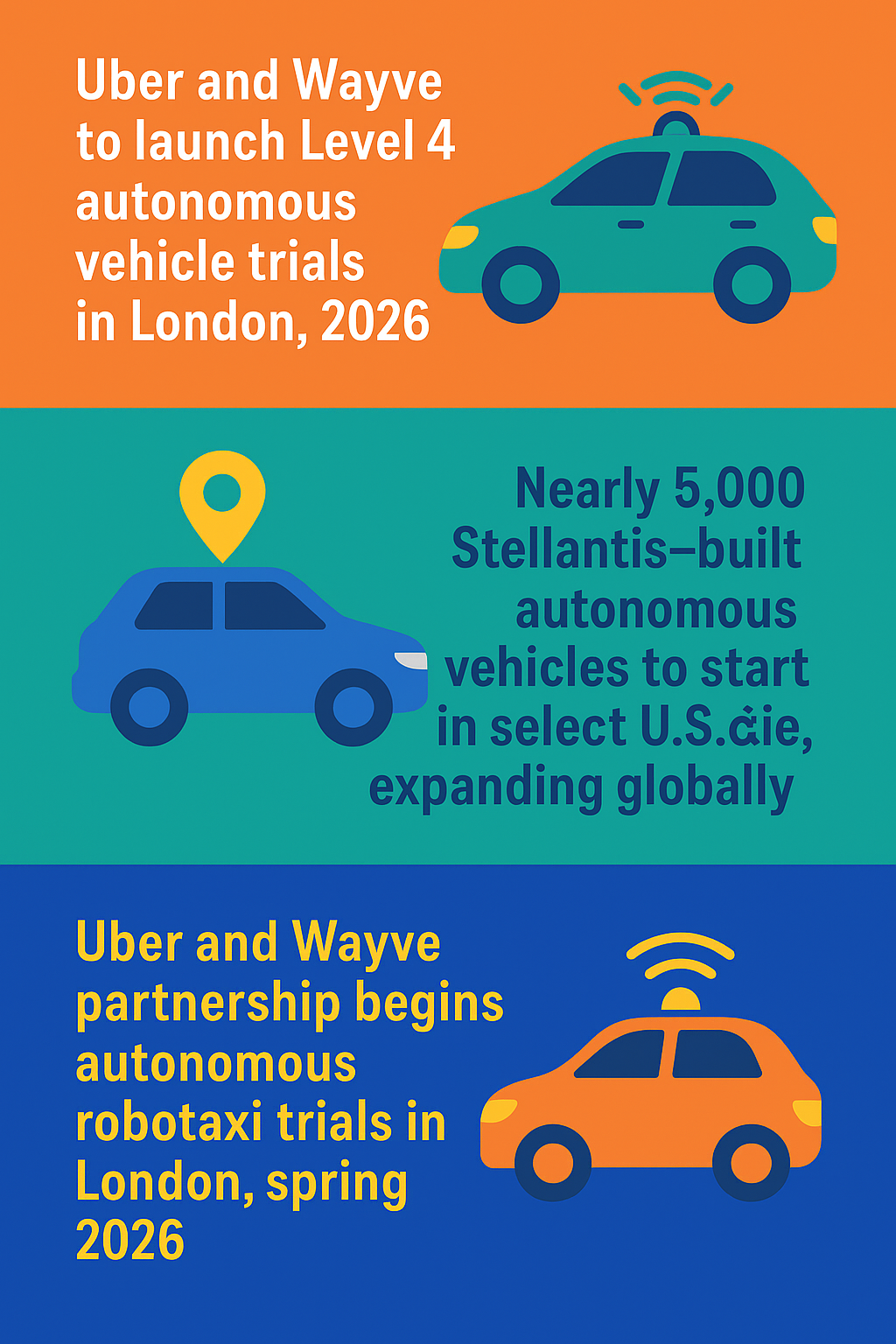Global Scans · Uber · Organization Briefing
Intelligence Briefing for Monitoring Uber
1. Key Trends
- Autonomous Mobility Expansion: Uber is accelerating integration of robotaxi technology through strategic partnerships (e.g., with European startup Wayve), aiming to launch fully autonomous robotaxi trials in London by spring 2026.
- Phased Deployment Approach: Initial rollout of self-driving taxis in Dallas features safety drivers onboard, indicating cautious operational scaling amidst technology validation.
- Pressure from New Entrants and Innovations: Tesla’s imminent robotaxi service with high-utilization, low-cost fleets poses a disruptive pricing and operational challenge to Uber's ride-hailing incumbency.
2. Competitive Moves
- Partnership with Wayve to deploy fully autonomous robotaxis in London marks Uber’s deepening commitment to autonomous tech adoption (Teleport).
- Launch of robotaxi services in Dallas using Avride vehicles, currently requiring safety drivers, indicating progressive market entry and regulatory navigation (Business Insider).
- Facing pricing pressure as Tesla prepares to introduce robotaxis with significantly higher fleet utilization and substantially lower operating costs, challenging Uber’s cost structure and fare competitiveness (Applying AI).
3. Market Impact
- Industry Disruption: Tesla’s robotaxi model may drive down prices industry-wide, forcing incumbents like Uber and Lyft to reassess pricing strategies and fleet utilization to maintain market share.
- Elevated Customer Expectations: Autonomous, lower-cost rides could reset consumer baseline for convenience, pricing, and availability, heightening demand for innovation from Uber.
- Regulatory Complexities: Trials in cities like London and Dallas reflect growing regulatory engagement and evolving safety standards for autonomous vehicles, impacting operational readiness and expansion.
4. Risks & Opportunities
- Risks:
- Loss of market share due to Tesla’s disruptive pricing and operational efficiency.
- Regulatory delays or liabilities tied to safety concerns during autonomous rollout phases.
- Potential technology adoption gaps if partnerships like Wayve underperform or scale too slowly.
- Opportunities:
- Leveraging partnerships to pioneer autonomous technology adoption in key urban markets ahead of competitors.
- Utilizing gradual human-supervised deployments (e.g., Dallas) to optimize safety protocols and build regulatory trust.
- Developing scalable pricing models to counter Tesla’s price disruption and retain customer loyalty.
5. Recommended Monitoring Strategies
- Data Sources: Industry news platforms (e.g., Business Insider, Teleport), specialized AI and autonomous vehicle analysis sites (e.g., Applying AI), official Uber press releases, and regulatory filings.
- Update Frequency: Weekly updates on autonomous vehicle trials and pricing models; monthly strategic reviews of partnership developments and competitor moves; quarterly deep-dive reports on regulatory and market shifts.
- Methodologies: Employ real-time media monitoring tools, sentiment analysis, plus scenario planning workshops focused on autonomous vehicle adoption impacts and competitive pricing responses. Include benchmarks on fleet utilization metrics, pricing trends, and regulatory milestones.
Briefing Created: 15/12/2025
